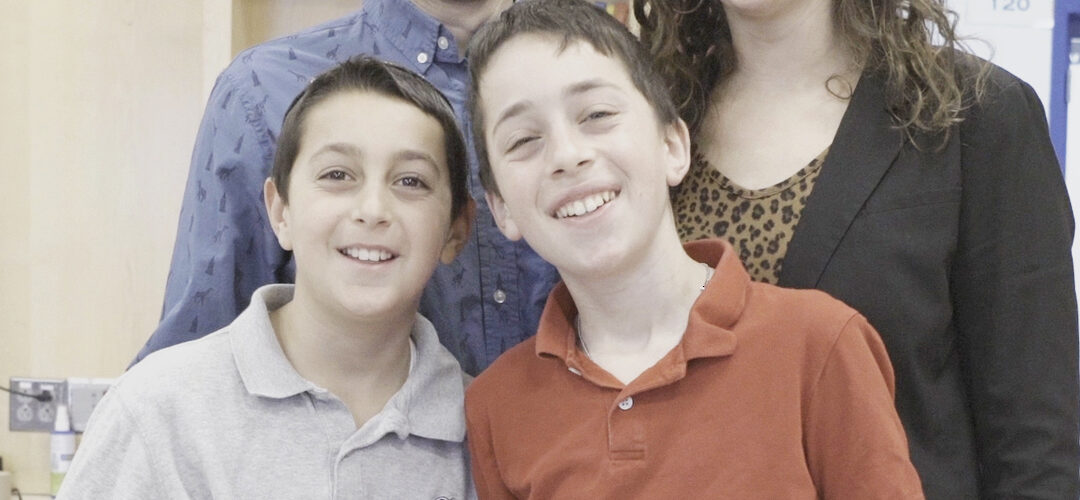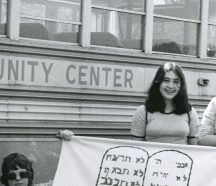Fundraising Over the Years
With the founding of the Israeli state in 1948, the remaining Jews of Europe were finally able to secure a home of their own. But immigrating and settling in a new land brought colossal challenges. Through its “Exodus Campaign,” the nationally organized United Jewish Appeal set out to raise more than $250 million in order to transport and resettle a minimum of 180,000 displaced European Jews.
Locally, the AJC’s Jewish Welfare Fund took up the call. “Just imagine, 25,000 to 30,000 men, women and children are coming into Israel every month—an unbelievable figure,” wrote campaign chair Joseph Meyerhoff in a fundraising appeal. “Transporting, feeding, clothing and integrating these people is almost a super-human task. [But] it has been undertaken and can be continued only with American help.”
The JWF raised more than $3.2 million from Baltimoreans during the campaign. Much of those funds would go toward Operation “Magic Carpet,” which transported 49,000 Jews from Yemen between June 1949 and September 1950.
In 1967, with the outbreak of the Six Day War, Jews in Baltimore were once again asked to open their wallets in support of Israel. “We are not asking for money for arms, for munitions, for military purposes. We are asking for the support of people who had little to begin with before, and who now turn to you for assistance and support,” said Rabbi Morris Lieberman in a 1967 speech for the Israel Emergency Fund. “We are asking for money, but our goal is not money—but lives…The question is not how much can you give—but how much can you afford not to give in terms of your feelings as a Jew, your acceptance of the humanitarian responsibility placed before you, your integrity as a human being.”
Baltimoreans responded with zeal. The campaign netted $4 million, the majority raised in two days under the leadership of Irving Blum and LeRoy Hoffberger. Fundraising meetings were jammed. Volunteers manned every available telephone, day and evening. Teenagers washed cars for the emergency fund, and in every synagogue and temple, rabbis devoted their sermons to the cause.
But just six years later, fighting broke out again in Israel, what became known as the Yom Kippur War. Once again fundraisers mobilized. More than 1,300 men and women called approximately 35,000 residents throughout the Baltimore Jewish community. The Associated spearheaded another Israel Emergency Fund, this time raising $15 million. “The people of Israel have more problems than we can imagine,” read a campaign ad. “War widows and children who need education and training. Absorption centers which are strained to the hilt…and more immigrants coming daily. Aged and infirm who need continual care. Homes that must be rebuilt. Education that must continue…”
In 1978, in a happier event, the Associated kicked off the first Walk for Israel, an 11-mile fundraising stroll through Baltimore’s Jewish communities to help celebrate the country’s 30th anniversary. Attracting more than 2,200 walkers, the event raised more than $66,000. A year later, the walk grew to 3,000 participants who raised more than $90,000. Among them was Susan Kohen, who told the Jewish Times, “For Israel, I’m willing to survive the aches and pains to make it the whole way!”
Subscribe to our newsletter
The Associated is a home for everyone in the Baltimore Jewish community. We offer several email lists to help people find a community, engage with their peers and support Jewish journeys around the world.
Join Our Mailing ListAdd Impact to Your Inbox
Sign up for our newsletter
Subscribe to our newsletter
The Associated is a home for everyone in the Baltimore Jewish community. We offer several email lists to help people find a community, engage with their peers and support Jewish journeys around the world.
Join Our Mailing List









 Please Wait while we loading your video.
Please Wait while we loading your video.